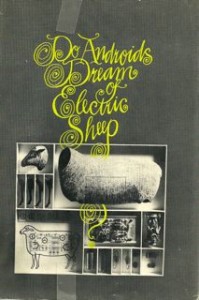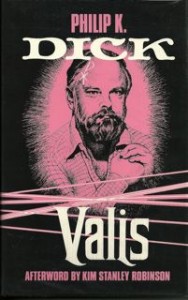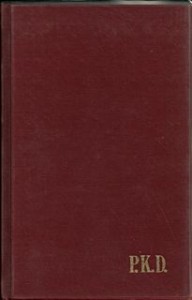I stopped dealing books on ABE Books eight years ago because it was obvious they wanted to nickle-and-dime dealers to death, as well as force us to sign up for third party re-sale programs that were previously voluntary. Plus the people in charge didn’t strike me as the smartest knives in the toolbox.
Speaking of ABE stupidity, over at SF Signal I noticed this link to an ABE article on the most valuable first editions of Philip K. Dick. Below some boilerplate on Philip K. Dick’s life (generally accurate, but nothing anyone couldn’t have written by skimming Wikipedia or Clute & Nichols) there’s a list of “Top 15 Most Collectible Philip K. Dick titles sold on AbeBooks”. The problem is, anyone with a knowledge of Philip K. Dick first editions who looks at the pictures accompanying those fifteen titles can tell the people who put them up didn’t have a freaking clue, as many don’t match the edition they’re illustrating:
- The picture accompanying Do Androids Dream of Electric Sheep? is not the Doubleday first edition of 1968 described, but a later UK edition. An example of the real dust jacket for the first edition (albeit an Ex-Library copy) from my own collection is shown below.

- The picture accompanying the listing for a UK Gollancz edition signed by Dick could not have been the edition Dick signed, since it is part of the Gollancz Masterworks editions published about two decades after Dick’s death. FWIW, my copy of the true Putnum first edition is shown below.

- The edition of Valis shown in the image is not that of the Kerosina Press lettered hardback edition, but the more recent trade paperback reprint. (I have a copy of the slipcased numbered edition signed by Kim Stanley Robinson, but not one of the lettered copies with the Dick signature tipped in.) A scan of the cover of the Kerosina edition is shown below.

- The copy of Dr. Bloodmoney shown is not the Gregg Press hardback described, but the true paperback original (PBO) edition mentioned in passing. (All a scan would show is the usual Gregg Press plain green cloth.)
- The copy of The Collected Stories of Philip K. Dick shown is not one of the 1/100 deluxe editions with Dick’s signature tipped in, but rather the regular unsigned edition (which is also the edition I have).
- The picture of Solar Lottery shown is not the Gregg Press (first US hardback) edition described, but the PBO. (Again, all a scan would show is the usual Gregg Press plain green cloth.)
- The copy of Confessions of a Crap Artist shown is not the Entwhistle hardback described, but one of the trade paperback editions (I own the hardback first, a scan of which is shown below, but I don’t own the paperback, so I can’t tell from sight whether this is one of the essentially simultaneous first edition in wrappers, or the second printing.)

So, out of fifteen books, seven have the wrong picture. That’s pretty piss-poor for an article on collectible books. Then again, ABE frequently does things in a piss-poor manner. Anyone with any familiarity with Dick first editions would have spotted the discrepancies between the text and pictures right away.
And when I said “generally accurate,” there is a significant error in describing why Dick’s works are so valuable:
Because of his relative obscurity throughout much of his life, most of Dick’s works received modest initial print runs. As a result, signed copies of those titles remain very scarce, making Dick one of the most collectible names in modern science fiction.
No, Dick’s early PBOs had runs in the hundreds of thousands (as did most SF paperbacks of that era), and the print run for Dick’s hardback books from mainstream SF publishers, while modest by the standards of bestsellers, were not any smaller than the runs companies like Doubleday did for their other SF writers. Signed Dick books are particularly valuable because he didn’t go to a lot of conventions or do terribly many signings. Also, many of his works published as paperback originals had later small hardback print runs from either small press or UK publishing houses, but they were not initial print runs, they were later editions for the collector or library markets, and they were done not because Dick was obscure, but because he was quite popular among SF readers.
For more reliable information of Dick first editions, I would direct you to L.W. Currey’s Science Fiction and Fantasy Authors: A Bibliography of First Printings of Their Fiction and Daniel J. Levack’s PKD: A Philip K. Dick Bibliography.
For the record, of the 15 Dick titles they list, I have the first hardback editions of 12 of them (though not in the signed states that made many of the copies listed in the ABE piece so pricey); I lack Flow My Tears, The Policeman Said, the Gregg Press Dr. Bloodmoney and the Rich & Cowen World of Chance, which was the first hardback edition of Solar Lottery. I do, however, have a copy of the Cape first hardback edition of The Penultimate Truth, which is rarer than about half the books on their list…
Updated 3/17/10: At least someone at ABE seems to have been paying attention, as many of the wrong images have now been replaced, and the text I singled out as erroneous has been rewritten.



